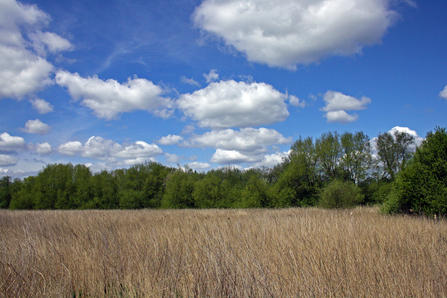February 2 is World Wetlands Day, a day which draws attention to our need to revive and restore degraded wetlands.
Wetlands provide a vital ecosystem supporting wildlife, people and the planet so it’s in all of our interests to find out more about them, to protect them and take whatever steps we can to minimise their loss.
Over the past 50 years, 35% of the world’s wetlands have disappeared. Here in Hertfordshire, wetland cover is just 1% of the total county area and sits below the national average of 3%. Where ancient remnants of wetland habitat exist in the county, these are a high priority for restoration for the Trust and, for where the opportunity exists, to expand and connect them - especially where they lie alongside rivers, making a natural pathway for wildlife.


